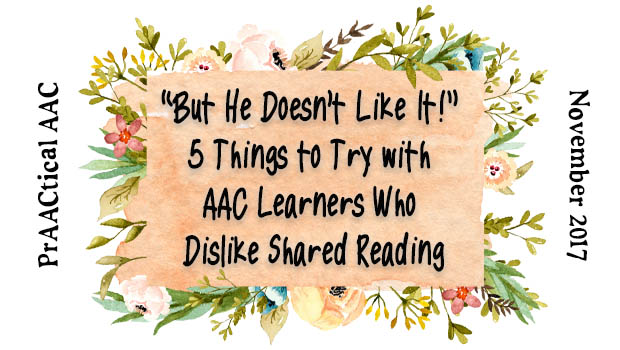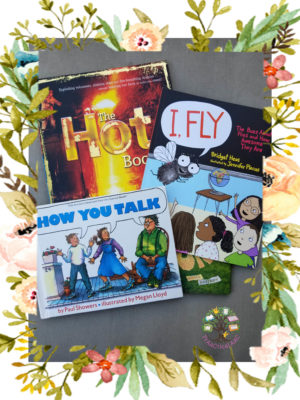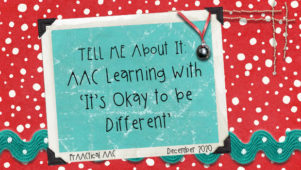“But He Doesn’t Like It!” 5 Things to Try with AAC Learners Who Don’t Like Shared Reading

Have you had an experience like Stacy’s?
Stacy SLP knows the importance of building literacy skills in her students who use AAC and was happy to have found an age respectful book that aligns with the curriculum. She downloaded it onto her iPad and practiced reading it so that the push-in session would go smoothly. Stacy reviewed the students’ SGDs and came up with a plan for targeting specific language or AAC skills. She was determined to infuse more literacy activities into her therapy and began the reading activity with equal measures of excitement and nervousness. It was both frustrating and disheartening when her students didn’t like the activity, were hard to engage, and even tried to escape. Within the first few minutes, her enthusiasm had turned to fear (’What do I do NOW?’) and dread (‘How am I going to get through this session?!’).
Many of us have had a similar experience at some point in our careers. Despite our interest in promoting literacy, we haven’t been that successful at using book-reading as a way to build language in our students who use AAC.
Shared reading is a great way to model AAC, expand language, build background knowledge, and much, much more. But what do you do when the AAC learner doesn’t like sitting together to read a book?
In today’s post, we share a few things to try.
- Create books that feature the AAC learner: Even reluctant readers are intrigued when they are the start of the show. Seeing photos of themselves in school, at home, and in the community helps them engage with the material, and can be a great way to re-build interest in reading.
- Keep it short: Try to end the reading experience BEFORE the AAC learner loses interest. Don’t feel like you have to read the whole book or read every word on the page.
- Check your book selection

- Capitalize on their special interests: Try picking books that feature highly preferred characters, topics, and events. Ten books on elevators? A whole shelf devoted to Frozen? A bin full of African animal stories? We’re flexible enough to handle whatever it takes to kindle a love of reading.
- Check the genre: Are you reading mostly fictional stories with your AAC learners? There may be a disconnect between the kind of reading material we are selecting and the kind that are preferred by the AAC learners we serve. In most homes, therapy rooms, and classrooms, the book selections are made by women. As a group, women tend to prefer fiction and often select engaging stories and populate the Reading Area with books about fictionalized events. That can be a problem for learners who prefer true accounts of events, factual books, and informational narratives. Boys/men tend to prefer non-fiction and outnumber girls/women in being diagnosed with a developmental disability. That means we should probably have more NON-fiction narratives than fictional stories on our shelves and in our book bins. If your AAC learners aren’t that interested in reading, it may be a good time to peruse your book collection to see if there are adequate numbers of non-fiction books. (Thanks to Dr. David Koppenhaver for the reminder of this powerful point!)
- Is it a good book? If it isn’t interesting and compelling, then trying to get an AAC learner to engage with it will be an uphill battle. It may make more sense to go back to the drawing board and select a different book.
- Add structure and visual supports: Having a defined structure to book-reading time allows learners to better understand what will be happening and when it will be over. The more they understand about the activity, the more likely they are to want to engage (on a good day) or at least offer less resistance (on all the other days). You can get more information on structuring activities and specific suggestions for how to do this here and here.
- Use props: For AAC learners who have challenges with receptive language, pretend play, and abstract concepts, book-reading doesn’t play to their strengths. We can make things more concrete and engaging with the addition of props that can be held and manipulated. For example:
- Toy vehicles that match the book’s dump truck, police car, train, or fire engine
- Puzzle piece animals that resemble the animals in the storybook
- Images of characters from the book’s illustration that have been photocopied and laminated
We can use these to act out things that happen in the book, use them to re-tell the story, or just hold onto them as fidgets or transitional objects.
One last tip: Be The Fun! The secret ingredient to getting an AAC learner to engage in a shared reading experience is YOU. Use an animated voice and enthusiastic body language. Ham it up. Don’t be afraid to look or sound silly. Add drama, anticipation, and excitement to make for a more engaging interaction.
Also, if you are considering ways to modify the story, this post on Using Adapted Books with AAC Learners may be helpful.
Do you have tips for working with learners who don’t yet like shared reading? We’d love to hear about them.
Filed under: Featured Posts, PrAACtical Thinking
Tagged With: Books, shared reading
This post was written by Carole Zangari




